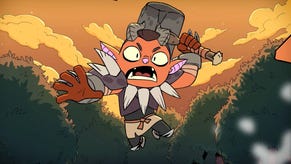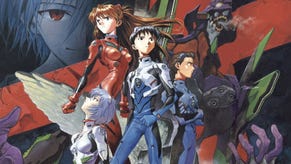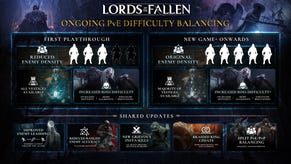Capcom: The Great DMC Defense Starts Now
If we take anything away from the latest DMC demo, it’s that Capcom really wants you to believe this is the real deal. Defensive? Not a bit of it.
DMC is a real Devil May Cry game. I know because it’s the one thing Capcom and developer Ninja Theory want to tell the journalists watching the title’s gamescom demo virtually every time any question’s asked. What did you have for breakfast? This feels like a real Devil May Cry game. That sort of thing.
The men standing in front of me – US producer Alex Jones, Japanese producer Motohide Eshiro and Ninja Theory frontman Tameem Antoniades – look as though they’re on trial. A third-party developer may be making this, but it’s legit. They swear it.
Exhibit A: the game. We see a combat demo. It’s a scene on a baroque street. Dante, the young version that caused such a fuss when he was unveiled a year ago at TGS, runs into a spot of demon-related bother.
"They dragged me into Limbo," he huffs, as if being dragged into Limbo was some sort of minor inconvenience. There’s thumping music and we’re straight into combat with juggling moves, chained weapons, spinning attacks in the air with double pistols, close-ups for special moves and rolling.
I type “Bayonetta”. We’re not allowed to film what we’re seeing, but it’s impossible to ignore the impact Hideki Kamiya, the director of the first Devil May Cry, has had on the genre with his leggy witch. There’s a heavy surreal element to play, with the city breaking up around Dante as he fights.
Dante's accompanied by a ghost-like female aid. She tells him that the city itself is trying to stop him.
"The world is malignant, it's a malignant version of our world," says Tameem. "It's like a sentient, living world. It forms enemies to attack you like white blood cells. It tries to crush you and kill you in different ways."
The team won't elaborate on her identity.
"We're not introducing her yet, but she's in there for the journey with you,” says Antoniades. “She's based in the human world, not in the demon world that Dante gets dragged into. And she can communicate to Dante, hence she appears in a ghost-like form."
He goes on to explain the thinking behind DMC’s combat system.
"Dante himself has both demon and angel powers. Some of the side-attacks you see are his angel weapons, and there'll be more angel weapons he can swap between. There are demon weapons like the axe. You can swap between angel, demon and human live through gameplay, and within angel and demon you can also swap into different weapons. There's a lot of breadth to the combat.
"We're having a real collaborative effort here. We're making something that’s greater than the sum of its parts, something that neither one of us could really do on our own."
"With the demon ability he can pull parts of the environment; with the angel one he can fly to different parts of the environment, chain up it or just glide, and it's a mix between all of that - the combat, the gunplay, the angel, demon and human - that gives the breadth of combat we have."
Tameem adds: "In the incarnation of Dante, he's much more aggressive and young. He's more of a street fighter.”
"There will be more depth in the final version that what you're seeing now,” warns Jones, in case we judge too harshly.
“Obviously, from a combat standpoint, we don't have all the moves in. What you're seeing is just a very small sub-set of the final combat count."
We see the Devil Trigger ability in action. Dante leaps from enemy to enemy in the air using chains, pulling himself around a courtyard without landing.
"With the Devil Trigger, a lot of the emphasis is on aerial combos and staying within the air. The more you stay in the air, the more damage you gain: it's juggling. It's very skill-based.”
Eshiro-san notes: "One of the biggest differences in this title compared to other Devil May Cry titles is the aerial combos. The Devil May Cry games up until now were much more focused on swordplay and gunplay on the ground. This time we're adding another layer, another dimension, by focusing a lot on aerial combat and chaining between enemies in the air."
A lot of the HUD elements - such as ranking and the Devil Gauge - are missing from the demo. They're "coming," according to Tameem.
The demo finishes with a section in which Dante’s platforming and racing against environmental puzzles, pitched against his malicious surroundings on floating islands and a church.
In the dock
From this point, talk switches to authenticity. I ask Tameem a question about weight of responsibility in creating something to appease Devil May Cry’s core fanbase and it’s as if we’re transported into a particularly taxing episode of Judge Judy.
"In terms of creating a combat system that feels right for DMC, that's something that we've always wanted to do, but in terms of responding to the haters, we've got our plan. We've got our world and we've got our path, and we're not changing that, because we believe that it's a cohesive world that's going to make sense when you get your hands on it,” says Antoniades.
“Unfortunately, people don't have their hands on it, so they can't appreciate or experience it. I think that all the people that are sceptical secretly want to like it, and our job it to prove that it is Devil May Cry in essence, and there's a whole other dimension to it that we've added that will elevate it."
And you think the new Dante is something Tameem and his desperately non-Capcom cohorts just slapped into the IP on a whim? Objection.
Jones: "Just to give some addition context: character design specifically is something that Capcom Japan is deeply, deeply involved in, probably second only to the combat fluidity and responsiveness. There have been dozens of meetings over the character design. This is very much collaborative. The vision for the character is shared across Ninja Theory and Capcom Japan."
"In terms of responding to the haters, we've got our plan. We've got our world and we've got our path, and we're not changing that, because we believe that it's a cohesive world that's going to make sense when you get your hands on it."
Really? I put it to you, sir, that Capcom doesn’t care about Devil May Cry any more. I put it to you, sir, that Capcom merely wants a quick cash-in on the series we all love so dearly.
"Capcom Japan is also heavily involved in an advisory capacity, in kind of a co-design capacity,” says Eshiro-san.
“Capcom's strength has always been control responsiveness, getting the character to do what you want him to do without stress on the part of the player, so we're taking all of our know-how in that realm and we're taking advantage of Ninja Theory's know-how when it comes to storytelling, cinematics, presentation.
“We're having a real collaborative effort here. We're making something that’s greater than the sum of its parts, something that neither one of us could really do on our own. We meet with these guys on a nearly monthly basis at this point, and we have a very close collaboration with Itsuno-san, one of the guys from Capcom Japan side who was a director of many Devil May Cry games up until now [Hideaki Itsuno, director of Devil May Cry 2, 3 and 4 – Ed].
“He works very closely with the designers at Ninja Theory to come up with these results."
Nonsense. A clear falsehood. And surely you can’t expect this jury to believe this abomination will feel like a Devil May Cry game? It’s running at 30 frames, for God’s sake.
"Sixty frames a second is important in terms of control responsiveness,” says Antoniades.
“I think we've got a very responsive control system that works, so when people say they're worried about 60 frames-per-second, I think they're more worried about the control response. That's something that we've worked hard on with Capcom Japan to nail.
"Going to 30 frames-per-second - which is locked, by the way; every milestone runs at 30, so it's not going to suffer as Enslaved did - allows us to introduce new elements, such as the world-changing elements, which I think will add an extra dimension to the overall gameplay."
Eshiro-san: "As Tameem latched on, when it comes to the idea of framerate, a lot of that is based less and less on visuals and more on inputs and the way the game feels.
“Itsuno-san has spent a lot of time with Ninja Theory to replicate the control feel of a 60 frames-per-second game through motion design, through the input methods themselves.
“I think when you get your hands on it, speaking to someone who's played the previous Devil May Cry games as well as DMC, it really does feel like a proper DMC game. You will not necessarily notice the difference once the controller is in your hands.”
The jury deliberates. It’s difficult to not believe him based on the demo. DMC is a furious adaptation of the Devil May Cry formula, with the series’ concepts and mechanics apparently stretched to the limit. We haven’t played it, obviously, but can creatives of this calibre, taking this much care, and looking this embattled by the fanboy legions really be condemned for negligence?
Verdict: not guilty. Looks awesome. You’ll be playing it on PS3 and 360 in 2012. Watch for more from TGS this week.




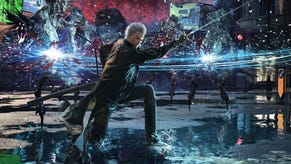



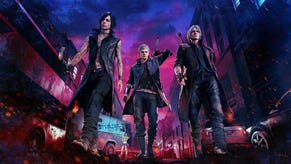

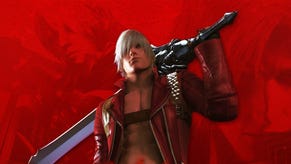
.png?width=291&height=164&fit=crop&quality=80&format=jpg&auto=webp)
